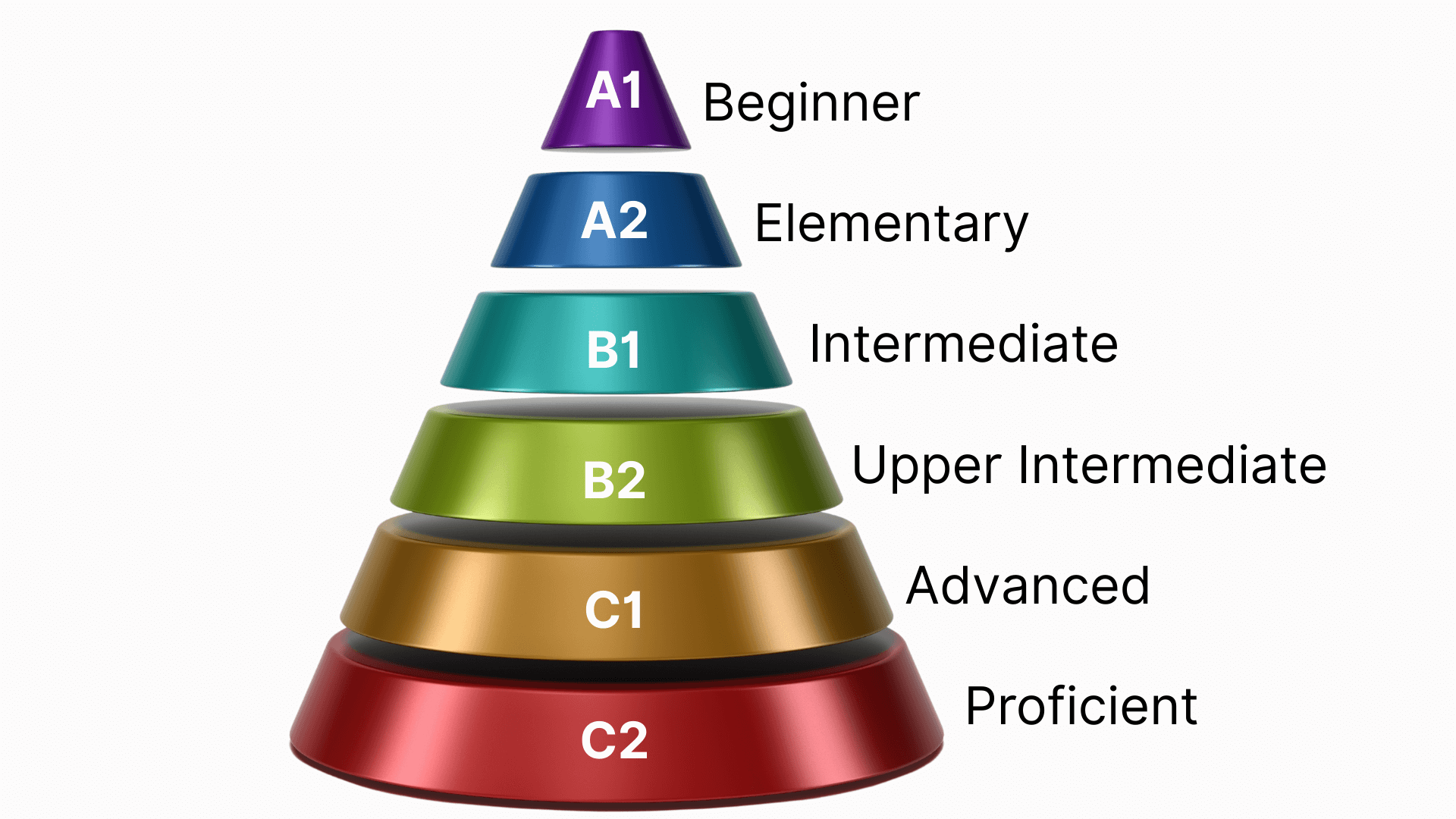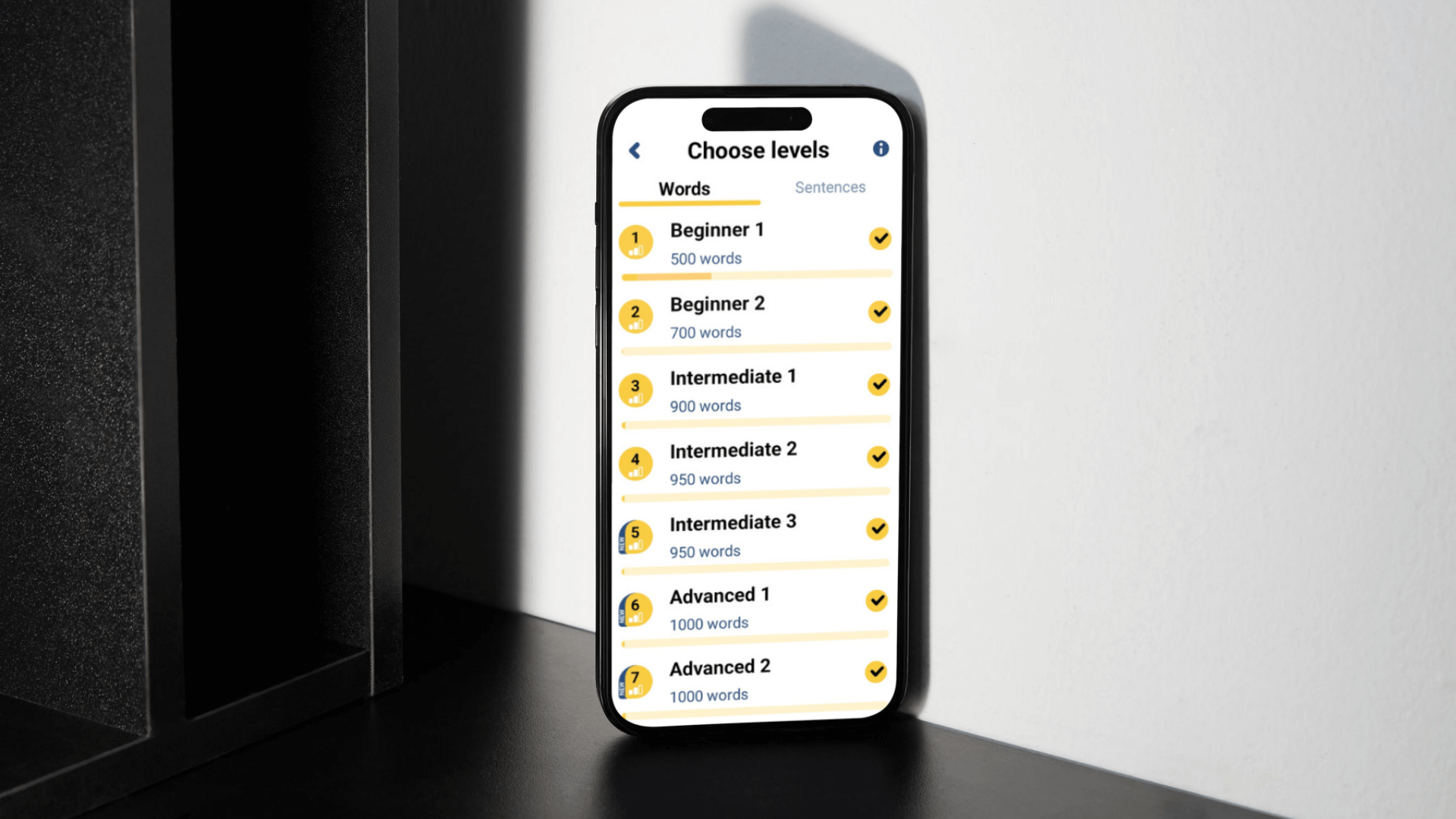What is the CEFR? Your Quick Guide to Understanding Language Levels

If you've ever thought of learning a new language, you might have heard of the CEFR or language proficiency levels. Can you assess your proficiency in a language? And what does it mean to know a language? Is it quantified by knowing many words or by being able to express your thoughts even with a limited vocabulary? Let's see what CEFR is, how it defines language proficiency levels, and why you need this information as a language learner, especially if you're willing to get a certificate.
What is the CEFR?
CEFR stands for the Common European Framework of Reference for Languages. The Council of Europe developed it to standardize language learning and assessment in Europe and beyond.
The first efforts to create a common standard of abilities for language learners date back to the 1970s and 1980s. The goal was to develop a common description that would apply to all languages. The basic concepts were defined, along with the minimum requirements to use a language when living in a country. The development of the CEFR continued in the 20th century, marking significant progress. The first draft of the framework was published in 1995. The draft was revised over the following three years, and a user guide was developed.
In 2001, the CEFR was officially launched as the standard framework for learning, teaching, and assessing learners' language proficiency all across Europe. From 2003, the CEFR expanded worldwide. The framework remains widely used in Canada and regions of the US, Mexico, Colombia, Argentina, China, Japan, Australia, New Zealand, and other areas. The main areas of application are language teaching, testing, and learning.
What are the Language Levels Based on the CEFR?

The CEFR structures the knowledge a language learner acquires into six levels. Think of it as a roadmap that outlines the steps required to achieve your goal. The three main categories - basic, independent, and proficient - indicate what a learner can do from the point of view of their linguistic abilities.
Basic user
The first category includes language learners who require assistance learning and expressing their thoughts. Ideally, a student would be guided by an instructor who would help them understand the basics of the target language. As a beginner learner, you rely heavily on instructions and help. If you don't receive it from a language expert, you rely on help from the people you communicate with. Building a solid foundation in a new language is essential. Try to learn as much as you can about the language. Note how the target language is similar to or different from your native tongue. Anything that surprises you is more memorable.
A1 - Elementary
A learner with an elementary level of language proficiency can understand and use simple words and expressions. They can get by in simple, everyday situations.
An elementary level means the learner can:
- Introduce themselves;
- Ask and answer simple personal questions, such as where someone lives;
- Ask and answer simple questions about objects they have;
- Can participate in simple dialogues where the other person speaks slowly and articulates clearly.
A2 - Pre-Intermediate
Leveling up to A2, a learner can understand more words, phrases, and sentences than at level A1. At this stage, students can:
- Provide basic information about themselves and their family;
- Ask and answer questions related to shopping, places around town, work;
- Speak about their background in simple words and basic phrases;
- Ask and answer simple questions about their surroundings;
- Provide simple information about immediate needs.
Independent user
As the category's name suggests, independent users can learn independently. Of course, the help of teachers, trainers, apps, and other materials can only accelerate the process. Learners can, however, keep learning on their own. Knowing the previous two levels is a strong basis for building.
B1- Intermediate
An intermediate level is often the minimum requirement for applying for a job that requires basic communication skills in a target language. An intermediate language learner has a good understanding of familiar topics. More specifically, a student who has achieved level B1 can:
- Participate in discussions about school, their family, daily routine or work;
- Handle conversations about work;
- Deal with simple situations while traveling or in an area where the target language is spoken;
- Describe past experiences using simple vocabulary;
- Communicate about dreams, hopes, and goals.
B2- Upper-Intermediate
The upper intermediate level adds fluency and complexity to learners' linguistic abilities. It adds confidence to speakers, and A student with the B2 proficiency level can:
- Understand the main ideas of complex text;
- Gain a general understanding of both concrete and abstract topics;
- Can hold simple conversations about their field of specialization;
- Can interact in the target language without necessarily being prepared;
- Can speak on a wide range of topics to express their opinion;
- Speak about the advantages and disadvantages of different opinions.
Proficient user
Proficient users continually improve their language skills, often without effort.
C1 - Advanced
Advanced language learners can express themselves fluently and easily find the right words, phrases, and expressions. A typical advanced language learner can:
- Comprehend longer, complex texts;
- Understand the implicit meaning of written information;
- Communicate effectively in social, professional, and academic contexts;
- Write well-structured texts on a wide array of topics;
- Successfully use connectors to produce cohesive texts and speeches.
C2 - Proficient
A proficient language level enables one to communicate fluently with native speakers. A proficient language learner can:
- Summarize information from various sources, both written and spoken;
- Create and present information coherently;
- Easily improvise on almost any topic;
- Clearly express their opinion in the target language;
- Understand subtleties and shades of meaning;
Why Language Learners Need to Understand CEFR
Understanding the CEFR and its application is crucial for unlocking study and work opportunities. Its most important benefit lies in its popularity. After all, it is used in most countries worldwide, from areas in the US to the entire of Europe, regions from Asia, and Australia. Let's explore more benefits.
Understanding language proficiency
The CEFR offers an overview of what each level entails. Regardless of the language, when someone says their level is A2 or B1, you have a general understanding of their abilities. That can be useful when interacting with people who try to communicate in your native language. For instance, if you need an opinion from someone at level A1, consider using simple wording and providing them with options to choose from.
Making Sense of International Exams
International proficiency tests, such as the TOEFL, IELTS, TOEIC, DELF, and DALF, align with the CEFR levels. For example, knowing the CEFR levels enables you to better understand the requirements of international tests. As a result, you can estimate with high precision how much preparation time and effort you need to obtain a particular score. On top of that, once you understand the basics of language learning according to the CEFR levels, you can apply the information to more languages you want to learn.
Choosing the Right Resources
Many of the language learning resources available are aligned with the CEFR levels. Knowing your level can help you select the best resources to learn from.
Tracking Your Progress
When learning a foreign language, the distinction between levels can be unclear. Not if you're familiar with the CEFR. Knowing the difference helps you estimate your level and set clear goals to reach the desired level. When in doubt, refer to the competencies table above or the Council of Europe portal for clarification.
Staying Competitive
You may notice that many employers ask about your proficiency level in a specific language. Moreover, it is common to include that information in your CV. Multilingual individuals are more likely to secure a job, particularly when applying for a customer-facing role. Companies often tend to hire global teams. Multilingual employees thrive in multicultural environments.
Reach Your Desired Language Level with FunEasyLearn

FunEasyLearn is an award-winning app that aligns its 10 proficiency levels with the CEFR - the globally recognized framework for language proficiency levels. A dynamic approach enables learners to progress from their current level to an advanced one. The language-learning application is trusted by schools, employers, and institutions worldwide. Millions of users practice their language skills daily with FunEasyLearn.
💹 High-frequency vocabulary
Most language courses average around 11,000 words, phrases, and sentences. The app prioritizes the most frequently used vocabulary by native speakers. Learn to communicate confidently in everyday situations, when meeting new people, planning a trip, or handling unpleasant situations.
🎮 Gamification
Learn by playing for better engagement and improved retention. Over 30 fun educational games reinforce your vocabulary stress-free. Participate in the daily challenge, Guess the Word, to practice the vocabulary you already know.
🧒 Child mode
Instantly adjust the app's content to suit a 13-year-old child with the click of a button. That's an excellent solution that turns your phone into a fun language practice. There are no annoying ads to disrupt your child's learning. Additionally, it's an excellent activity for a road trip or in remote areas without an internet connection.
⭐ Powerful premium features
Unlock your full learning potential with FunEasyLearn's premium packages. Leverage the smart review system, based on the principles of spaced repetition. Another important feature is the hands-free mode, which unlocks learning on the go. That is a significant advantage in today's fast-paced world. The third premium feature is Favorite Lists. It enables learners to select words, phrases, and sentences in their custom lists. These come in handy when learning for a specific purpose, such as an upcoming presentation or vacation.
Ready to master your language with CEFR-aligned courses?




